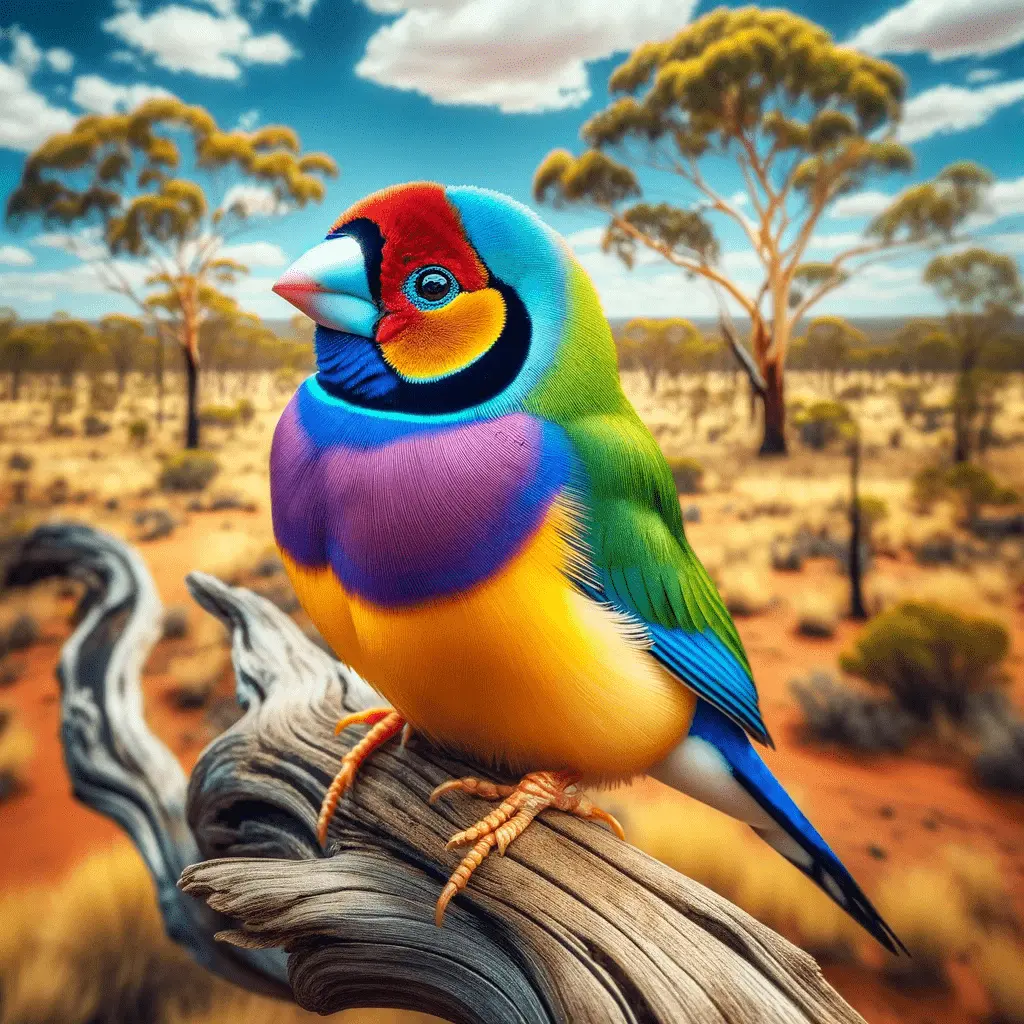In the world of aviculture, Gouldian Finches have been widely admired for their vibrant plumage and charming personalities. Breeding Gouldian Finches’ exquisite birds is often considered both an art and a science. This guide provides an in-depth look into the practices and considerations essential for successful breeding.
Habitat Preparation
First and foremost, an appropriate habitat must be established. Spacious cages or aviaries are recommended, where adequate flight space is ensured. We should keep the environment at a stable, warm temperature, as these finches are native to tropical climates. Natural light cycles are beneficial and should be maintained to simulate their natural habitat.
Dietary Requirements
Nutrition plays a pivotal role in the breeding process. A balanced diet, rich in seeds, fruits, and vegetables, is to be provided. During the breeding season, the importance of protein-rich foods such as sprouted seeds and egg food cannot be overstated, as they are crucial for the health of both parents and chicks.
Pair Selection and Breeding Behavior
Careful attention must be given to selecting a compatible pair. Their distinct color patterns and behaviors can distinguish the male and female. Their increased interaction and nesting behavior often indicate their readiness for breeding.
Nesting and Egg Laying
The provision of suitable nesting materials is essential. These finches prefer materials such as soft grasses and coconut fibers. In the privacy of their nest boxes, the female typically lays between 4 to 6 eggs. Incubation, predominantly carried out by the female, lasts about two weeks.
Chick Development and Parental Care
Once hatched, the chicks are to be closely monitored. The parents are known for their attentive care, feeding the chicks a regurgitated mixture of seeds and egg food. Fledging occurs approximately three weeks post-hatching, a critical period where independence gradually develops.
Health and Wellness Monitoring
Throughout the breeding process, they must closely monitor the health of both adults and chicks. Signs of stress or illness are to be promptly addressed, ensuring the well-being of the entire flock.
Conclusion
In conclusion, the successful breeding of Gouldian Finches requires dedication, knowledge, and a deep understanding of their needs. By adhering to these guidelines, breeders can contribute to the preservation and appreciation of these magnificent birds.
FAQs About Breeding Gouldian Finches
What is the ideal age for Gouldian Finches to start breeding?
-
- Gouldian Finches are typically ready to breed at about 9-12 months of age.
How can I tell the difference between male and female Gouldian Finches?
-
- Males have brighter colors and more elaborate song patterns compared to females.
What type of nesting box is preferred by Gouldian Finches?
-
- They prefer enclosed, wooden nesting boxes with a small entrance hole.
How many eggs do Gouldian Finches lay at a time?
-
- A female Gouldian Finch usually lays between 4 to 6 eggs per clutch.
How long does it take for Gouldian Finch eggs to hatch?
-
- The incubation period is about 14-15 days.
Do both parents participate in feeding the chicks?
-
- Yes, both the male and female Gouldian Finches feed the chicks.
What should I feed Gouldian Finches during the breeding season?
-
- A mix of seeds sprouted seeds, egg food, and greens is ideal during breeding.
How long does it take for the chicks to leave the nest?
-
- Chicks usually fledge at about 3 weeks of age.
Can Gouldian Finches breed year-round?
-
- While they can breed at different times, it’s best to limit breeding to a specific season for their health.
How often can Gouldian Finches breed in a year?
-
- They can have 2-3 clutches per year, but resting periods are essential for their health.
What are common health issues to look out for during breeding?
-
- Watch for signs of stress, feather plucking, and respiratory issues.
How do I ensure the finches have enough calcium during breeding?
-
- Provide a cuttlebone or calcium supplements in their diet.
Can different color variants of Gouldian Finches breed together?
-
- Yes, different color variants can breed without issues.
How can I ensure the finches’ environment is stress free for breeding?
-
- Maintain a quiet, stable environment and avoid frequent disturbances.
What should I do if a chick is rejected by its parents?
-
- You may need to hand-feed the chick with a special formula but consult with a vet or experienced breeder first.

